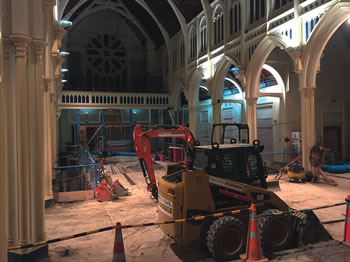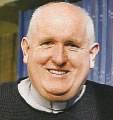What is a Church?
I re-traced some of my own history in the last fortnight, calling in on two churches which were very significant to me when I was a seminarian. Now, that was all over thirty years ago so I should have anticipated that things might have changed. It turns out that those places of worship have indeed been transformed and it led me to reflect on the question of “what makes a church?”
The first church was the seminary chapel at Greenmeadows in Hawkes Bay, where I spent five years of my training. We gathered for prayer in that chapel several times in the day. Morning Prayer (at what seemed an ungodly hour), meditation, Mass, visit after lunch, Evening Prayer, Rosary. One unusual feature of the building was that the front half of the nave was arranged as choir stalls – pews that faced across to suit the recitation of the Divine Office. As seminarians we sat there while the brothers and the faculty sat in the ordinary pews further back. I remember the power of the singing that filled that chapel and the beauty of the Easter Ceremonies there.
Marist seminary formation left Hawkes Bay over twenty years ago. The Society of Mary still owns the property but it is now run by a successful business enterprise which helps finance the works of the Congregation. Mission Vineyards produces and sells fine wines from there and a top-flight restaurant, called the Mission Restaurant, uses part of the main seminary building and the de-consecrated chapel.
I stood in the choir loft and admired the way the space below has been converted into an elegant reception venue. Double doors open out onto the lawn and outdoor dining area. It is a popular venue for weddings. The couple exchange their vows outside in a little pagoda with the beautiful view of Napier behind them. After that, they come into the ex-chapel and host their wedding breakfast.
The place was the same, but the uses it is being put to are entirely different.
This led me to reflect that a church building, no matter how beautiful, without a community who worships there is not a church. It may have been a church, it may one day be a church again, but while the worship of God is not regularly offered by a congregation there it is not a church now. It is still a special building, significant for its history, the events that have happened within, the sacraments celebrated there and the prayers offered in that place. It will however either fall apart from lack of maintenance or be 're-purposed' and acquire a new function, as museum, as function centre or as pottery studio or even a dwelling.
The second church I visited on my personal history tour was where I worshipped for another three years of my seminary training when I was attending university in Wellington. This was St Mary of the Angels in Boulcott Street, the place where I made final vows as a Marist.
At the moment St Mary of the Angels is a building site rather than a Church. It is not open to the public. There are fences and scaffolding. It is controlled by a Site Manager not by the Parish Priest. When I wangled admission I had to wear a hard hat. There are enormous holes in the floor and they are cutting through the roof to replace columns and ‘portals’. There is heavy machinery in the nave. The altar is boxed up in timber to keep it safe and the blessed sacrament is reserved in the church hall.
Unlike Mt St Mary’s in Greenmeadows, there is still a worshipping community associated with St Mary of the Angels. They consider themselves parishioners of St Mary’s despite having to worship elsewhere. Weekday masses are in the hall beneath the presbytery as is the early Sunday mass. Later Sunday masses are at the Cathedral, at St Joseph’s parish, and at St John’s Presbyterian church.
The congregations who gather in these disparate places of worship still identify with St Mary of the Angels aided by their parish newsletter, the community of priests who lead them in worship and the formidable Fr Barry Scannell their parish priest.
The church community who do not have access to their building are still a church. They are a church because they come together to worship God. The biblical words for church are like the words 'convocation', 'congregation', 'assembly' they refer to a group of people who have been called together. When you gather for liturgy you constitute yourselves as a congregation - you become church.
Some of the effects that have been observed during this time in exile. Fewer people coming to confession. Fewer visitors joining them for mass. People are going elsewhere for weddings and church ‘events’. The hall is warmer on a winter morning than the church used to be. The Church building is no longer available to 'make a visit' and quietly pray in the middle of the city. The collection is down.
Church buildings are important places, but they are the expression of a particular community and the usual venue where that community worships. People rather than bricks make up a church.


 Entries(RSS)
Entries(RSS)